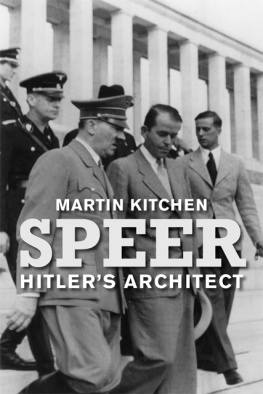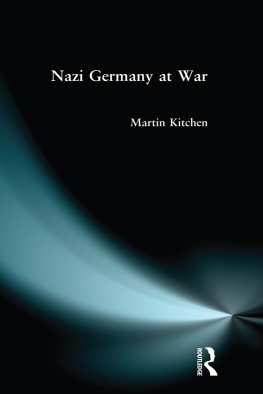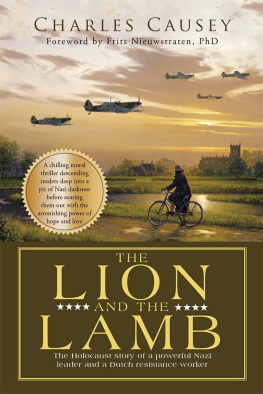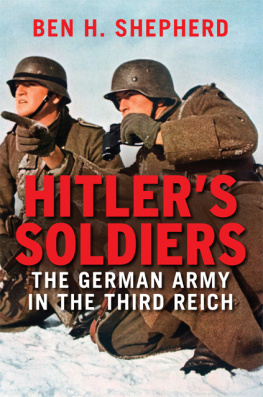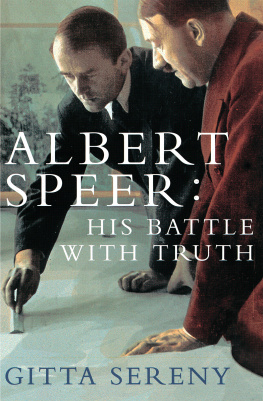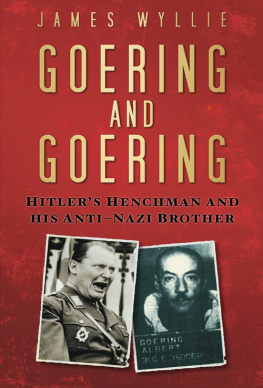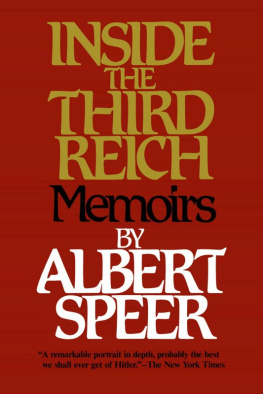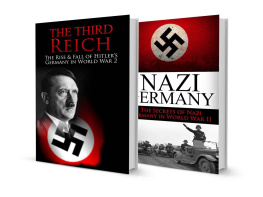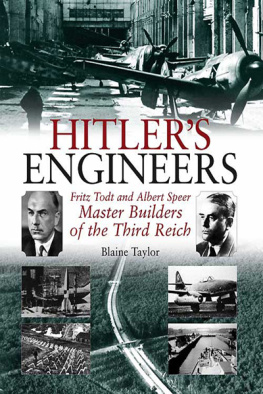

Copyright 2015 Yale University
All rights reserved. This book may not be reproduced in whole or in part, in any form (beyond that copying permitted by Sections 107 and 108 of the U.S. Copyright Law and except by reviewers for the public press) without written permission from the publishers.
For information about this and other Yale University Press publications, please contact:
U.S. Office:
Europe Office:
Typeset in Minion Pro by IDSUK (DataConnection) Ltd
Printed in Great Britain by Gomer Press, Llandysul, Ceredigion, Wales
Library of Congress Cataloging-in-Publication Data
Kitchen, Martin.
Speer: Hitlers architect/Martin Kitchen.
pages cm
ISBN 978-0-300-19044-1 (cloth: alkaline paper)
1. Speer, Albert, 19051981. 2. Speer, Albert, 19051981Political and social views. 3. Cabinet officersGermanyBiography. 4. ArchitectsGermanyBiography. 5. NazisBiography. 6. War criminalsGermanyBiography. 7. GermanyPolitics and government19331945. 8. GermanyMilitary policy. I. Title.
DD247.S63K57 2015
943.086092dc23
[B]
2015023355
A catalogue record for this book is available from the British Library.
10 9 8 7 6 5 4 3 2 1
ALFRED FRANKE
In memoriam
Ein Knig, der Unmenschliches verlangt,
Findt Diener gnug, die gegen Gnad und Lohn
Den halben Fluch der Tat begierig fassen.
Goethe, Iphigenie auf Tauris, Act 5 Scene 3
A king who enjoins inhuman deeds
Will find enough retainers, who for grace and payment
Avidly accept half the anathema.
CONTENTS
ILLUSTRATIONS

1. A portrait of the young architect taken in 1933, the year in which he had his first big successes with his designs for the May Day Rally in Berlin and the Nuremberg Victory Rally in August.

2. Albert Speer tutoring his younger brother. Ernst went missing at Stalingrad in 1942. The interior is solidly bourgeois, the mood depressingly serious.

3. Albert and Margarete on their wedding day in Berlin on 28 August 1928. Over the years the distance between them grew ever wider.

4. Paul Ludwig Troost with a model of the House of German Art in Munich. When Troost died in January 1934, Speer stepped into his shoes as Hitler's favourite architect.

5. The conservative architect Wilhelm Kreis gained access to Hitler's inner circle, thanks to his friendship with Troost. He admired the much younger Speer, who commissioned him to build the headquarters for the Army High Command (OKH), the Soldiers Hall and the Ministry of Transport in Germania. Other projects included the Egyptian Museum, the Museum of the Nineteenth Century and a World War Museum. None of these was built.

6. Hitler and Speer discuss architectural plans at the Obersalzberg. Hitler's obsession with monumental architecture was the key to Speer's power and influence.

7. The Cathedral of Light at the Nuremberg Party Rally in 1934. This was Speer's masterpiece, although Leni Riefenstahl's cameraman Walter Frentz later claimed that the idea was his. Speer was never as successful with bricks and mortar.

8. Speer shows Hitler a scale model of his design for the German Pavilion for the Paris Exhibition of 1937. He shared a gold medal with Boris Iofan for the Soviet Pavilion. Kurt Schmid-Ehman was awarded the Grand Prize of the French Republic for his 9-metre-tall gilded eagle that perched on the roof.

9. Speer and Hitler on an inspection tour of a model for the Nuremberg stadium. This was on a steep slope which meant that the tiered seating would have to be supported by massive barrel vaulting.

10. The garden front of the New Chancellery. Speer's neo-classical faade is somewhat marred by Josef Thorak's massive bronze horses.

11. The Marble Gallery in the New Reich Chancellery. It was exactly twice the length of the Hall of Mirrors in Versailles. The imposing doors to Hitler's vast study were at the end of the gallery. The highly polished marble floor was designed to make visitors feel even more uncertain while walking towards the presence, as if on thin ice.
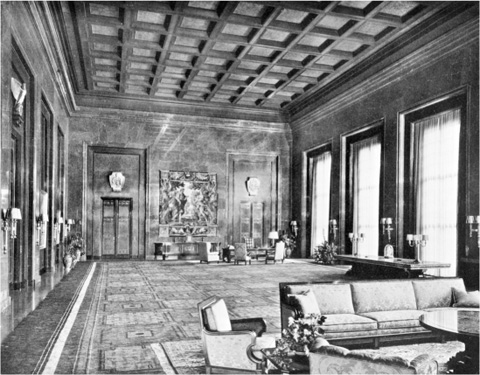
12. Hitler's study in the New Reich Chancellery was designed as a throne room rather than a workplace. Measuring 4,214 square feet it is testimony to Speer's obsession with effect at the expense of practicality and proportion.
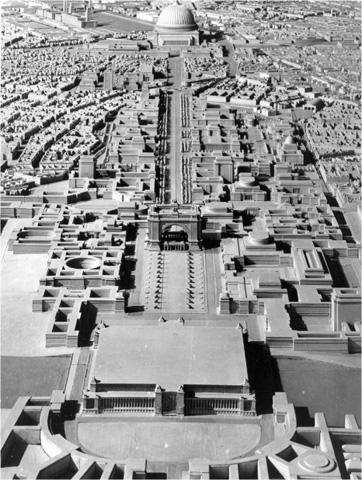
13. A model of the northsouth axis of Germania. Beginning at the Tempelhof Airport and Southern Railway Station, the boulevard led to the Triumphal Arch, the Great Hall of the People and ended at the Northern Railway Station.
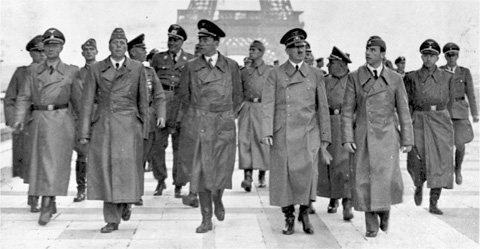
14. Speer stands between Hitler and his arch-rival, the architect Hermann Giesler, during a brief early-morning visit to Paris on 28 June 1940. Giesler was eventually to replace Speer in Hitler's favour.

15. Arno Breker in 1940 models a portrait bust of Speer in his Berlin studio. Although he enjoyed a highly successful post-war career, since he was National Socialist Germany's star sculptor Breker became a highly controversial figure.
Next page
